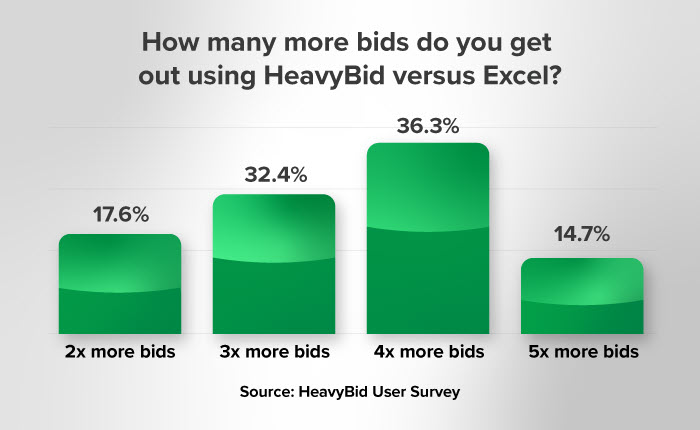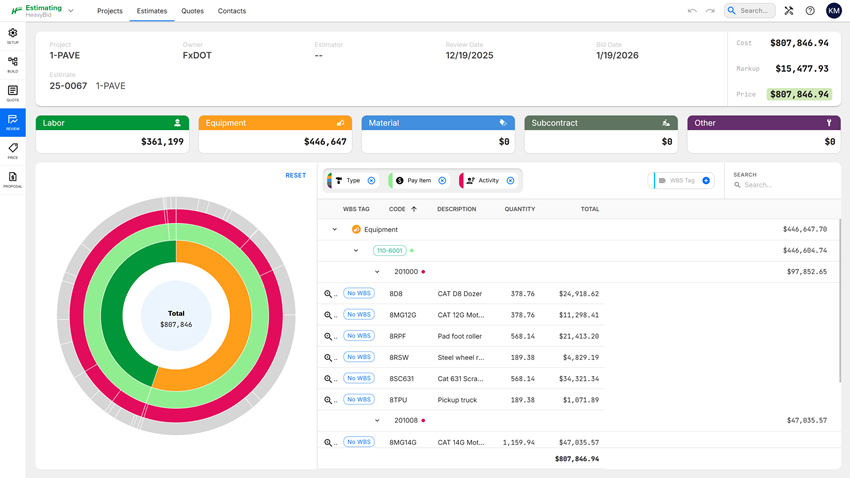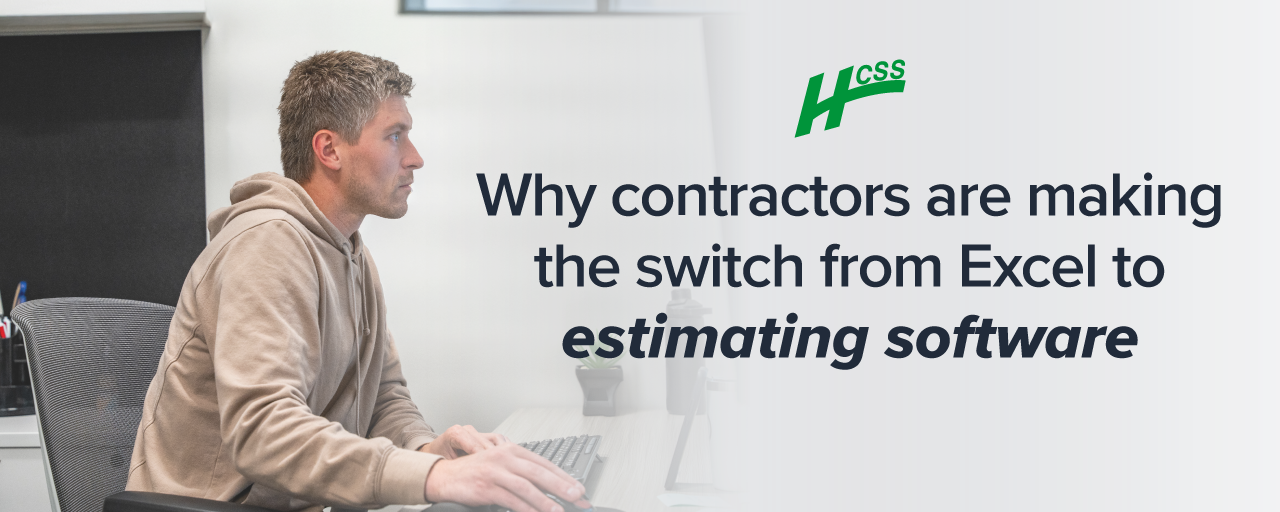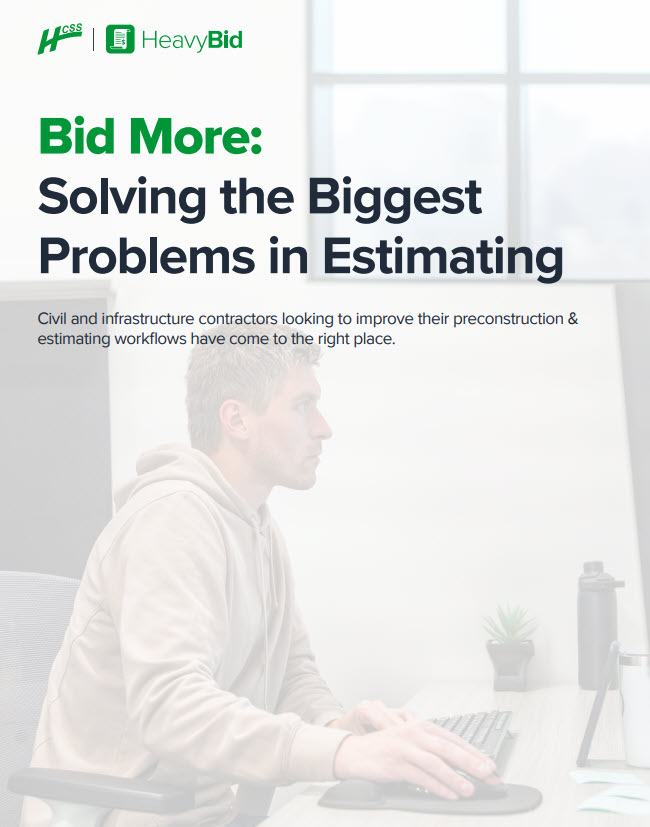In construction estimating, speed and accuracy can make or break your ability to win the right work. Yet despite high stakes and tight deadlines, many contractors still rely on spreadsheets like Excel to build and manage their estimates. It’s a system that’s familiar (and for years it was the industry standard), but it’s also one that’s no longer keeping up with the demands of modern bidding.
As competition intensifies and project complexity increases, relying on manual workflows limits your growth, reduces your accuracy, and costs you time you can’t afford to lose. That’s why more contractors, especially small and mid-sized heavy civil and infrastructure firms, are moving to estimating software built specifically for construction workflows. And in doing so, they’re solving the exact problems that have held them back for years.

The problem with estimating in Excel
As the battle between Excel vs. estimating software continues, it’s important to acknowledge that spreadsheets are no doubt a useful tool. However, they simply aren’t designed to handle the intricacies of construction estimating. From managing takeoffs and material quotes to updating equipment costs and tracking subcontractor rates, Excel demands constant manual input. Whether it’s swapping out a crew or adjusting production rates, every small change requires bouncing between multiple tabs and ensuring every linked formula updates correctly.
Excel vs. Construction Estimating Software
| Excel Spreadsheets | HeavyBid |
|---|---|
|
|
This introduces two major problems: inaccuracy and inefficiency. Without estimating software that’s purpose-built for construction, estimates take longer to build, longer to review, and are more prone to errors. When working with complex bids and tight timelines, those issues quickly become a bottleneck. As your backlog grows or your estimating team takes on more bids, inaccuracy can become painfully obvious, especially when the errors lead to underbidding or overbidding jobs.
Lack of visibility and too much guesswork
A major challenge with traditional estimating tools, including spreadsheets and outdated software, is the limited visibility they provide. When you’re managing vendor quotes by email, phone, or paper, it’s nearly impossible to keep track of real-time updates. Without a unified view of your data, you’re left making assumptions based on outdated numbers.
This guesswork can skew your entire approach to bidding. You might think you’re being competitive, but if you’re not understanding your true costs of labor, materials, and equipment, you’re bidding in the dark. Even worse, many contractors don’t have a clear way to track opportunities, understand pipeline health, or prioritize which bids are most worth their time. That lack of insight is costly.
Modern estimating software helps eliminate that guesswork by providing a single platform for material quote management and cost calculations. Instead of tracking down emails or searching through folder systems, estimators can rely on real-time data.

For example, bid management is a tool in HeavyBid Pre-Construction that allows you to add all your project details the moment you become aware of a potential job to bid on, including owner details, important dates, attached documents, and more. This enables you, as an estimator, to track every opportunity, choose the best jobs to bid on, and also monitor which ones you’re winning or losing.
Inefficient processes result in missing out on valuable bids
Spreadsheets shouldn’t be getting all the flak. Legacy estimating tools (i.e., outdated software systems) don’t have the inherent ability to standardize processes or share data efficiently across teams. This creates silos, making it difficult to bid effectively on multiple projects simultaneously.
Another downside of Excel compared to construction estimating software is the challenge of knowledge transfer. When senior estimators leave or retire, there might not always be an easy way to pass their expertise on to new team members. Without a centralized system for storing rate sets, production history, or past bids, that expertise can disappear entirely.
On the bright side, web-based estimating software like HeavyBid makes knowledge transfer and collaboration part of the workflow. New estimators can learn quickly by pulling up templates, reusing prior estimates, and leveraging standardized libraries. This also gives teams the ability to scale (even with a limited staff of employees who wear multiple hats) because the software does the heavy lifting of organizing, calculating, and adjusting estimates in real time.

Estimating software for contractors: a scalable solution
The idea that construction estimating software is only for big contractors is nonsense. Whether your firm is generating under $1 million or over $1 billion in annual revenue, the ability to automate repetitive tasks and standardize your approach to bidding can be a game-changer.
For smaller teams juggling multiple roles, this becomes even more critical. Estimators often don’t have the luxury of extra time to build every bid from scratch. With project list templates and libraries for labor, equipment, and resource costs, estimating software frees up your team to focus on what matters: winning more of the right jobs.
The new web-based HeavyBid is also a critical tool for reducing overhead costs. By shortening bid cycles and reducing review times, you increase your capacity without adding to your company’s headcount. This increased visibility into all active bids enables estimators to prioritize high-value opportunities while keeping a pulse on the entire preconstruction pipeline.
Faster adoption than you’d expect
One of the most common questions HCSS gets asked is, “How long until I can actually start bidding with this?” The assumption is that implementing new software means weeks or months of onboarding, but this particular small business estimating software is designed to impart rapid benefits.

In fact, many contractors are submitting their first proposal just seven days after purchasing a HeavyBid license. That speed to value is a huge advantage, especially when you’re in the midst of your busy season or working to quickly scale up your bid volume.
Experience the benefits of estimating software
If you’re still estimating in spreadsheets or struggling with outdated tools, there’s a better way. It’s time to start estimating faster, with more accuracy and less stress.
Estimating software helps you build consistent, accurate bids in less time, all while improving visibility across your projects and people. Whether you’re trying to win more jobs, train new estimators, or reduce the risk of costly errors, it’s proven that moving beyond Excel is a must for contractors who want to grow.
Let’s get you winning more of the right work. To learn more about common estimating challenges and how to solve them, download our free estimating eBook.




